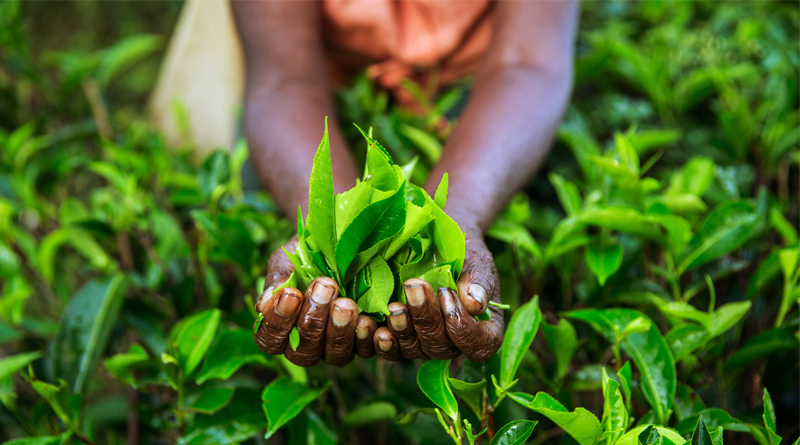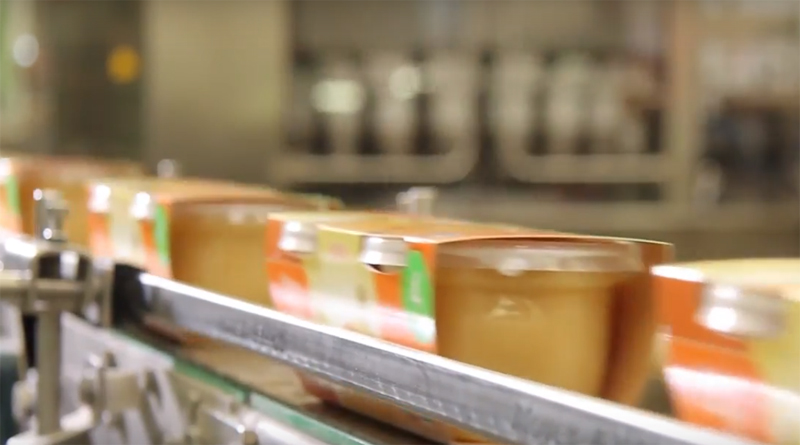Firmenich has announced cucumber as the 2017 “Flavor of the Year” based on the growing appeal of this refreshing flavor. The growing demand for refreshing, clean, and healthy food and beverages is reportedly driving cucumber’s surge in popularity. “Our trend insights show that consumers are really enjoying lighter, refreshing ‘green’ flavors, such as cucumber. We anticipate and respond to these needs by continuing to deliver healthy and novel taste solutions to match,” says Chris Millington, President of Firmenich’s Flavor Division.
Painting a broad picture, Millington adds: “Vegetables in general are becoming more accepted as flavors and ingredients, sometimes even replacing fruit in traditionally sweet categories such as ice cream and cereal. This is why we predict that 2017 will really see the mild cucumber become a big-hitting new favorite.”
Innova Market Insights has reported almost twice as many launches containing cucumber when comparing 2012 and 2015 launch numbers, with a CAGR of +73% per year. More launches of cucumber containing products were reported in the first 10 months of 2016 than in the whole of 2015, as strong growth in NPD continues. Interestingly, applications of cucumber are highly diverse in nature. Breaking down the top five categories for cucumber, applications were led by sauces & seasonings (29%), ready meals (20%), soft drinks (15%), supplements (7%) and snacks (5%).
This new landscape is opening up creative and delicious uses for cucumber, as William Moldt, Senior Flavorist at Firmenich comments: “I love working with cucumber and find its adaptability inspiring.” He adds: “Our customers never tire of its fresh, green and juicy notes and there is really no limitation on what we can create with cucumber.”
Cucumber’s growth has also influenced the product development within Firmenich’s Savory team, as Matthew Walter, Head of Culinary at Firmenich remarks: “The rise in cucumber can be attributed to its strong emotional link to freshness. Its ability to ‘accept’ other flavors essentially turns it into a blank canvas, allowing total creative freedom for a chef.”
As the demand for natural flavors such as cucumber increases, it’s important that the Company does its part to ensure its flavors are sustainable. “At Firmenich, we develop and manufacture our own natural green notes from sustainable sources, this helps support the growing demand for natural fruit and vegetable flavors,” says Stephanie Salord, Director of Ingredient Innovation at Firmenich. “Some of these green notes are materials that we keep for our flavorists only. For example, Pulpanat, as its name suggests, enhances the pulpy character of fruits and vegetables to drive even more fresh sensations,” she concludes.
In a detailed interview published in the December 2016 issue of The World of Food Ingredients Millington notes how Firmenich, the world’s largest privately-owned company in the fragrance and flavor business, is increasingly looking to position itself as a partner to the food & beverage industry. Several services that have been used in-house for years, now being offered to customers for their product development processes. The Swiss headquartered company had an annual turnover of CHF3.2bn (US$3.2bn) at end June 2016 and each year continues to invest 10% of its turnover back into R&D.
As customers look to differentiate themselves and also try to attract a very dynamic consumer base, they are increasingly benefiting from partners such as Firmenich, to offer value added services. This is why the company has launched a new tagline for the Flavor division called “Preferred Beyond Taste.” “It is about going beyond flavor, because what our customers are demanding from us is really about value-added services. Our value proposition expands exponentially every year, as clients ask us to provide them with more,” says Chris Millington, President Flavors Division, Firmenich. In a detailed interview, Millington discusses the company’s marketing and business strategy.
In terms of examples of going “beyond taste,” he notes that there are several services that the company has used in-house for years that are now increasingly being offered to customers for their product development processes. For example, consumer insights. “We have a tool called TRENZ, which we leverage on a global basis, where we are able to take customers through the changing consumer landscape; whether this is by demographic, geography, channel or category. We are able to explain to them what the near term horizons look like in categories such as alcohol, savory or citrus-based products. We do dozens of TRENZ walks each year in locations all over the world where we inspire our customers to create new products and ideas,” he notes.
The second area is around sensory. “We have had a global descriptive panel of 24 trained panelists based in India for more than 10 years and we were one of the first in the industry to create such a panel to support our business. These experts are specialized in our descriptive language, which we call “Aromasphere.” This not only helps us internally to standardize the way we describe flavors around the world, but also how we communicate this externally with our customers,” says Millington. “Our expert panel and Aromasphere language allows our clients to refine descriptors that really resonate in their product development process. Often those types of descriptors are used in the marketing positioning of the new products being launched,” he concludes.
Firmenich predicts that cucumber’s popularity will grow throughout 2017 because of its relevance to three global meta-trends that the Company is monitoring: namely Refreshment, Health & Natural, and Fermentation & Pickling.
Beyond Salad – the “Cool” Cucumber Meets the Refreshment Trend
In recent years, refreshment has become a major driver in many beverage and sweet goods categories and cucumber perfectly matches this new desire. Cucumber enhances the refreshing characteristics of whatever it is used in, and as a result has become a “go-to” flavor for product developers. Most often used as one of a pair, cucumber adds a twist to standard flavors such as apple, mint, lemon and lime while increasing the energizing characteristics of a food or beverage. It also adds a touch of sophistication to otherwise simple products and flavorists have embraced the versatility it provides. The green, watery characteristics of cucumber marry well with fruits, herbs and citrus and are universal drivers of freshness not only in beverages but also in dairy and savory products.
Beautiful Benefits Boost Cucumber in the Health & Natural Trend
Consumers today actively seek products that contain natural flavors and ingredients and which are associated with health and wellness. Cucumbers have long been used as a natural way to heal ailments, from reducing puffy eyes to hydrating skin. It’s use as a digestion aid and to reduce the effects of alcohol further drive popularity. Incorporating cucumber into food and beverage products taps into the consumer’s desire to have products that not only taste good, but are also good for them.
Fresh and Fermented
Cucumber reinforces another growing trend, that of pickling. Pickling is the process of preserving or extending the shelf life of food by either fermentation or immersion in vinegar. Pickling as a culinary and health trend has been on the rise for many years, and today, fermented food is recognized as beneficial for gut health. Cucumbers have been used in this process for centuries and with the fermentation trend showing no sign of slowing, cucumbers are a trend-follower’s perfect match.
Firmenich believes in the vast potential of cucumber. Its ability to cut across segments and geographies, and meet so many of the needs of today’s consumers, gives cucumber longevity. This, coupled with its unassuming coolness, makes it a flavor that will be difficult to top in the years to come.
In terms of other flavor trends to watch out for in 2017, Millington notes a continued desire around the world for “bold” flavors. The trend started in alcoholic beverages in Japan around 3 years ago, with adding spices to alcohol. Another global trend relates to the notion of different degrees of severity of heat in products. It is also about authenticity around areas such as smoky flavors, which evoke the feeling of food being cooked directly over fire. “This whole concept of boldness, whether it is jalapeno or much more traditional spices from India or Asia is not just being driven in Savory; it’s across all categories. In fact we see a fusion of flavors, where both savory and sweet flavors are coming together. You see that in areas such as nutritional bars, where this is a growing trend,” he notes.
In beverages, matcha is a growing trend, especially in tea and tea-based beverages. Citrus flavors such as yuzu are also becoming very prolific. “This is a cross between a grapefruit and an orange and has a very interesting and edgy flavor, with a bold delivery. This is more appealing to younger generations, who are looking for something that goes beyond traditional orange, lemon or lime,” he says.
Coconut, which was Firmenich’s prediction for 2016 is still on trend. “We had coconut as our flavor of the year for 2016 and we developed concepts around it all over the world. We saw a huge rise in interest in coconut flavored products; whether coconut milk, water or more,” he concludes.
Source: Food Ingredients First








